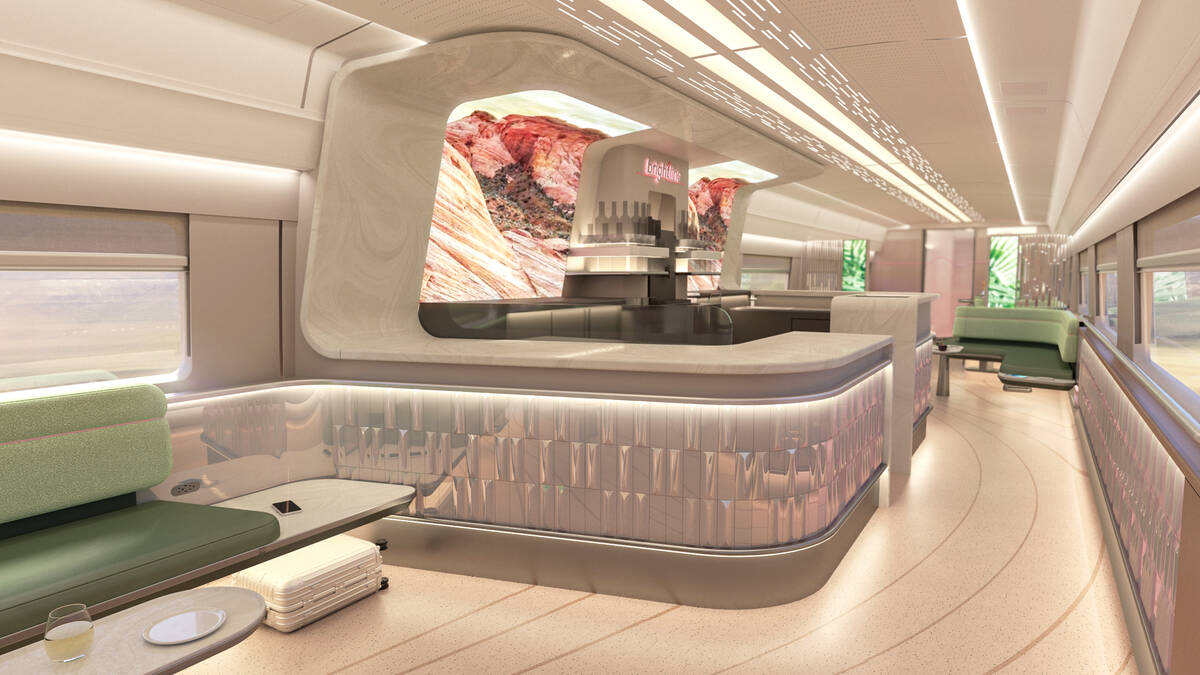Brightline West high-speed rail construction could start soon
Brightline West has a ton of momentum heading into the new year after securing billions in federal funding for the planned high-speed rail line to connect Southern Nevada to Southern California.
In September, the Federal Railroad Administration signed a $3 billion grant awarded to Brightline West and the Nevada Department of Transportation to go toward the $12 billion project.
The U.S. Department of Transportation also previously approved up to $3.5 billion in private activity bonding authority for the project. The department then awarded an additional $2 billion in private activity bonds, bringing the total bonding authority for the project to $5.5 billion. The bonds are a debt instrument that allows private entities such as Brightline to benefit from tax-exempt municipal bonds.
Brightline plans to pay for the rest of the project’s cost with a mix of equity contributions and debt.
In September, it was announced that Siemens Mobility would build the train sets to be used on Brightline West in a soon-to-be-constructed facility in upstate New York.
The significant federal financial backing has 2025 shaping up as the year construction could finally begin on the long-discussed project.
With a lofty goal to have the 218-mile system up and running by the 2028 Olympic Games in Los Angeles, work on the project likely must start in 2025. The project would link stations in Las Vegas and Rancho Cucamonga, California, where riders can transfer to the existing Metrolink rail system to travel to and from downtown Los Angeles, with multiple stops in between.
Brightline has been conducting geotechnical work and surveying in Southern Nevada and Southern California over the past year, which is used for the final stages of engineering and design.
That work has continued following Brightline West holding its groundbreaking ceremony in April in Las Vegas. Nevada Department of Transportation Director Tracy Larkin Thomason said this month that the project is moving along at an expected pace.
Brightline is working with lenders to secure the needed financing on the project, Thomason said during a Dec. 9 transportation department board of directors meeting.
“We’re completing the right of way occupancy permit for work that’s being done within (Interstate 15) right of way and we’re finalizing design and estimates.” Thomason said. “There will be more updates on this as we move into the new year.”
When civil construction work begins, crews will work on multiple portions of the rail line at a given time rather than starting at one end and progressing to the other. The work zones will be split into four sections — one in Nevada and three splitting up areas in California — where work will occur simultaneously. Tasks included in the civil work are building or changing highway drainage, structures, foundations and utilities to create the train alignment.
After the civil work is completed, the alignment will be turned over to the systems and track contractor who will lay the track and add the trackside electrification, which will provide power to the all-electric train system.
Brightline plans to build stations in Las Vegas and in California in Rancho Cucamonga, the Victor Valley and Hesperia. A vehicle maintenance facility is planned for Sloan, with another maintenance facility to be constructed in Apple Valley, California.
Once complete, a trip between Las Vegas and Rancho Cucamonga is expected to take 2 hours, with the train reaching speeds of up to 200 mph. Pricing for the train system has yet to be released by Brightline West.
Contact Mick Akers at makers@reviewjournal.com or 702-387-2920. Follow @mickakers on X.




















